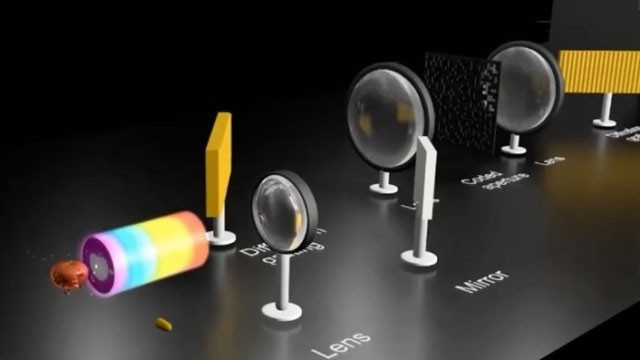The Best Diets for Heart Health

In addition to regular exercise and not smoking, diet is one of the best ways to protect your heart. Here are the best diets for heart health.
Engineers at the INRS Énergie Matériaux Telecommunication Research Center have developed a camera that can capture images at 156.3 trillion frames per second (fps), the world's fastest camera for capturing events that occur in a few femtoseconds (a femtosecond is one millionth of a billionth of a second).
To put that into perspective, the best slow-motion cameras on phones typically operate at a few hundred fps, while professional video cameras operate at a few thousand fps.

The team relied on a technology called Compressed Ultrafast Photography (CUP), which can capture 100 billion fps, which they developed in 2014. They then developed a technology called T-CUP, where T stands for "trillion frames per second", which can capture up to 10 trillion fps. In 2020, a version called Compressed Ultrafast Spectral Photography (CUSP) can capture up to 70 trillion fps. And now, the researchers have doubled the speed to 156.3 trillion fps.
The new camera system is called "scanning-aperture-coded real-time femtosecond imaging" (SCARF).
SCARF works by firing an ultra-short pulse of laser light, which passes through the object or event to be photographed.
If you photograph a rainbow, the camera will first record the red wavelength, followed by orange, yellow, and finally violet. A laser pulse records the changes as each color passes through in turn in a very short period of time. The pulse then passes through a series of components that focus, reflect, diffract, and encode it, and finally converts it into data that a computer can reconstruct into the final image when it reaches the sensor of a charge-coupled device (CCD) camera.
According to the team, their camera system can capture events that happen too quickly for previous versions of the technology to observe, such as shock waves traveling through matter or living cells, which could help improve fields such as geography, biology, chemistry, materials science and engineering. The device is detailed in a paper published in the journal Nature Communications.
https://newatlas.com/technology/scarf-worlds-fastest-camera-156-3-trillion-frames-per-second/
In addition to regular exercise and not smoking, diet is one of the best ways to protect your heart. Here are the best diets for heart health.
Diet is important to our health. Yet most of our meals are lacking in these six important nutrients.
At first glance, AirPods look just like any other true wireless earbuds. But that all changed when a few little-known features were discovered.
In this article, we will guide you how to regain access to your hard drive when it fails. Let's follow along!
Dental floss is a common tool for cleaning teeth, however, not everyone knows how to use it properly. Below are instructions on how to use dental floss to clean teeth effectively.
Building muscle takes time and the right training, but its something anyone can do. Heres how to build muscle, according to experts.
The third trimester is often the most difficult time to sleep during pregnancy. Here are some ways to treat insomnia in the third trimester.
There are many ways to lose weight without changing anything in your diet. Here are some scientifically proven automatic weight loss or calorie-burning methods that anyone can use.
Apple has introduced iOS 26 – a major update with a brand new frosted glass design, smarter experiences, and improvements to familiar apps.
Yoga can provide many health benefits, including better sleep. Because yoga can be relaxing and restorative, its a great way to beat insomnia after a busy day.
The flower of the other shore is a unique flower, carrying many unique meanings. So what is the flower of the other shore, is the flower of the other shore real, what is the meaning and legend of the flower of the other shore?
Craving for snacks but afraid of gaining weight? Dont worry, lets explore together many types of weight loss snacks that are high in fiber, low in calories without making you try to starve yourself.
Prioritizing a consistent sleep schedule and evening routine can help improve the quality of your sleep. Heres what you need to know to stop tossing and turning at night.
Adding a printer to Windows 10 is simple, although the process for wired devices will be different than for wireless devices.
You want to have a beautiful, shiny, healthy nail quickly. The simple tips for beautiful nails below will be useful for you.













